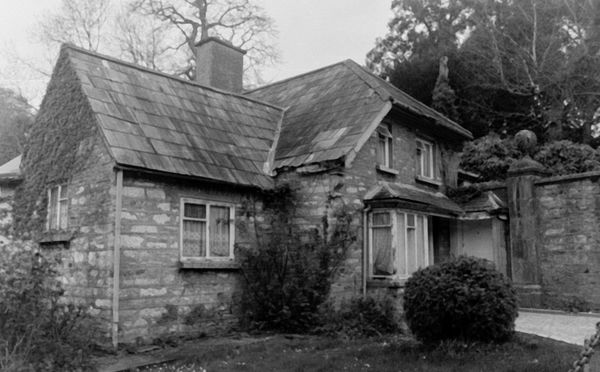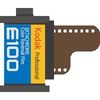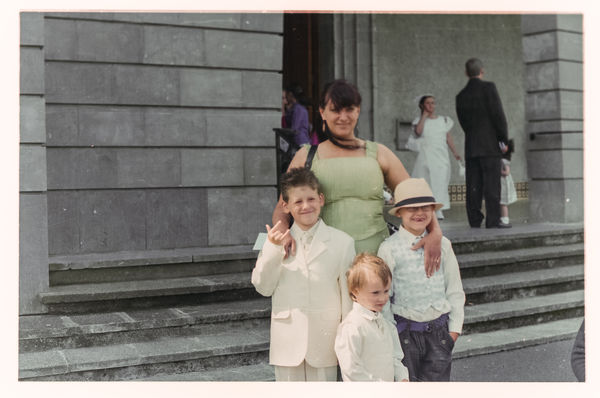Need advice on film scanners
Sep 8, 2017 17:54:48 #
TriX wrote:
Scotty, what resolution have you found to be optimum for scanning with the Epson for 35mm? Medium format? Just bought one in the last few months and still trying to optimize IQ vs scan time.
In the school portrait lab where I worked, we scanned 645 format, split 70mm, and full 46mm long roll negs to 3000 pixels on the long side when the largest expected print was 10x13. When we needed to make our largest size prints, we maxed out resolution at 6000x4000. That was using a Kodak Bremson HR500+ scanner, a $50,000 workhorse (2003 dollars!) that could scan roll film images in less than 5 seconds per negative. Alas, that machine is obsolete. They stopped making parts in 2010.
My little home brew slide and negative copier is dependent on the camera for resolution limits. I'm using my little GH4, which has a maximum resolution of 4608x3456 pixels. Nikon D850 users copying 4x5 materials with a macro lens would get some incredibly detailed images from the 8256x5504 pixel array. That size file makes a magnificent, pristine 30x20 print with no interpolation.
The beauty of using the camera is capture speed. You can snap a copy as fast as you can slide the next frame into the carrier and blow it off with Dust-Off. The processing can be somewhat automated in Lightroom by storing a user preset with all the right adjustments for the type of film you're copying. Select a batch of similarly exposed images from the same film, click the preset, tweak as necessary. You can copy a whole roll of negatives, then reverse them in LR, decide which frames you like, and process only those, just as with digital camera images.
Sep 8, 2017 18:23:19 #
Thank you all for the input. It looks as though the Plustek is the most usable choice for the 35mm scanning. I'd love to have a Nikon Coolscan 9000. That would take care of my 6x6 and 6x7 needs also. But it's too much money. The other used Nikons are a very difficult field to navigate as there were a lot of choices over the years in the IV and V model areas and which is which and which is compatible with what OS is no longer clear to me. No one has ventured an opinion on the Braun NovoScan 120 that I listed in my first posting. It was not mentioned in the megareview that was posted earlier. It seems very new. B&H told me they have a lot of orders for them, but that may relate to the incredibly low cost for a 120 film scanner.
Sep 8, 2017 19:43:30 #
burkphoto wrote:
In the school portrait lab where I worked, we scan... (show quote)
Thank you for the detailed information. I have a roll film 35mm negative carrier for my big 4x5 Bessler and a 50mm Macro lens that would work perfectly for a similar setup to what you fabricated. Sounds like a good weekend project (assuming that Irma stays west). My Epson scanner and SW is fine, but slow.
Sep 8, 2017 19:49:19 #
I have the Plustek 8200 AI. The only difference is the AI version comes with Silverfast AI Studio 8 scanning software which I find very easy to use. The SE version included with the 8200 SE is the same software without some of the extra features.
Sep 8, 2017 20:39:19 #
I have used VueScan. As I recall its command set was not compatible with the Dimage on Motorola cpu chip version of Mac.
Tet68survivor wrote:
Try VueScan for Mac OS, also update your driver's!
Sep 9, 2017 07:43:56 #
burkphoto wrote:
If you're going to scan, get an Epson V600 or higher-numbered scanner.
Personally, because scanners are slow, I would rather copy my slides and negatives with a macro lens. I made a suitable device out of junk parts and an enlarger negative carrier. See below.
The B&W image was made in 1986 on 35mm Ilford HP5. I copied it on the rig shown here. View in Download to approximate the quality. It made a fine 10x8 print.
Personally, because scanners are slow, I would rather copy my slides and negatives with a macro lens. I made a suitable device out of junk parts and an enlarger negative carrier. See below.
The B&W image was made in 1986 on 35mm Ilford HP5. I copied it on the rig shown here. View in Download to approximate the quality. It made a fine 10x8 print.




Sep 9, 2017 09:23:53 #
TriX wrote:
Has anyone on the thread actually tried an enlarger projecting directly onto a scanner? If so, please post your experience.
Last night I got chance to have a play with my enlarger and see if I could get a decent image.
Short version good fun but not sharp enough.
I used some glossy inkjet paper as a target.
I initially tried to use my fuji f47fd as the camera for this. It's jpeg only however the main problem was not enough manual control. It was quite keen to use it's built in flash. Turns out manual gives you control of everything but shutter duration and aperture.
So I switched to my K5 and a 90mm macro lens, it figured at f2.5 and iso 80 a 10 second exposure was necessary. Focus is hard because you have to get the enlarged image in focus and the camera lens focused. I ended up using a magnifying glass to try and get the enlarger focused. For the camera I'm going to try a laser next time, the image from the enlarger is a bit too dark to get a certain focus, i got close but it could be better.
The big problem really was the color film. The red channel is way stronger than the other two, the blue channel barely gets a signal while the red channel is full. I have a tiffen 80a filter which may help balance the channels better for my next experiment.
The projected image size is another issue with the k5 its just not possible to get close enough to be near vertical over the image, there is a big enlarger head in the way. so the top and bottom of the image are at a different distance from the lens. It seems a smaller image is better able to get within the dof of the lens. At the same time it is also a lot harder to focus when it's smaller. A brighter enlarger bulb would also help, I was using a 60 watt.
I think this technique would work better with a black & white negative, color is just incredibly hard to work with when you invert the image to a positive the blue, yellow slider is hard across at 2000 degrees it wants to be lower. I think a better surface to project onto would also help. A smaller camera and a smaller sensor may also help for getting closer to the vertical and a greater depth of field. Raw very much helps.
~edit a better way :)
What I did was remove the enlarger lens and set the head side ways and used a macro lens (this was the wrong lens as it only used a 1/4 of the frame really).
Just in lightroom I did an invert of the tone curve and then exported as a tiff and canceled. because lightroom can't fully color balance the dng i needed the tiff to go further. I did a white balance from the walls and got this. Considering I have done very little to this it's not bad for a first go is it. The handy thing is i could just put the camera roughly in place on my tripod and crank the enlarger head into the right position. i needed to move it a bit on the table. but once set up this is a very fast way to capture negatives. I need to change lenses but this looks to be a fast working solution.
Sep 9, 2017 09:29:48 #
Just a thought but I might be able to use the enlarger lens on my camera this one is m39 but you can get an m39 to m42 adapter I already have an m42 helicoid and extension tubes and a couple of enlarger lenses :) one is a color head. Perhaps a stack from the colorhead might work really well.
Sep 9, 2017 23:13:33 #
blackest wrote:
Just a thought but I might be able to use the enlarger lens on my camera this one is m39 but you can get an m39 to m42 adapter I already have an m42 helicoid and extension tubes and a couple of enlarger lenses :) one is a color head. Perhaps a stack from the colorhead might work really well.
I think I have found my new favourite fast method, there is still a lot of cleanup to do. Alignment of the camera and the enlarger head is pretty straightforward. I found a 180mm Tamron macro works fairly well. Lightroom does need a double developing to get the white balance although its possible in photoshop to use match color to neutralise the mask. Almost everything you do to remove dust and scratches softens the image but thats true of most cleanup methods. The actual capturing is pretty fast once you are set up. I used a 2 second delay to minimise any bounce. shutter speed around 1/10th to 1/45th at iso 80.
To be fair the flatbed scanner takes best part of an hour to scan 12 35mm negatives and It needs adjusting to suit each negative. Digital ICE uses infrared to spot dust which works only for color negatives. I don't think there is much advantage in using a flatbed for black & white photo's. I have a black & white film in my k1000 , I will try and see if I can finish that off and see how a new clean negative works with this method next week.
converted from color negative using enlarger and 180mm Macro lens on Pentax k5 (captured as dng)

(Download)
If you want to reply, then register here. Registration is free and your account is created instantly, so you can post right away.







